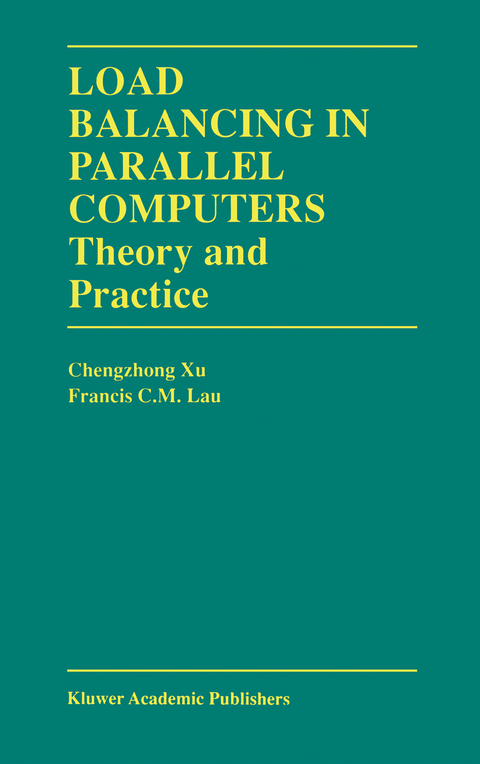
Load Balancing in Parallel Computers
Theory and Practice
Seiten
2013
|
Softcover reprint of the original 1st ed. 1997
Springer-Verlag New York Inc.
9781475770667 (ISBN)
Springer-Verlag New York Inc.
9781475770667 (ISBN)
Load Balancing in Parallel Computers: Theory and Practice is about the essential software technique of load balancing in distributed memory message-passing parallel computers, also called multicomputers. Each processor has its own address space and has to communicate with other processors by message passing. In general, a direct, point-to-point interconnection network is used for the communications. Many commercial parallel computers are of this class, including the Intel Paragon, the Thinking Machine CM-5, and the IBM SP2.
Load Balancing in Parallel Computers: Theory and Practice presents a comprehensive treatment of the subject using rigorous mathematical analyses and practical implementations. The focus is on nearest-neighbor load balancing methods in which every processor at every step is restricted to balancing its workload with its direct neighbours only. Nearest-neighbor methods are iterative in nature because a global balanced state can be reached through processors' successive local operations. Since nearest-neighbor methods have a relatively relaxed requirement for the spread of local load information across the system, they are flexible in terms of allowing one to control the balancing quality, effective for preserving communication locality, and can be easily scaled in parallel computers with a direct communication network.
Load Balancing in Parallel Computers: Theory and Practice serves as an excellent reference source and may be used as a text for advanced courses on the subject.
Load Balancing in Parallel Computers: Theory and Practice presents a comprehensive treatment of the subject using rigorous mathematical analyses and practical implementations. The focus is on nearest-neighbor load balancing methods in which every processor at every step is restricted to balancing its workload with its direct neighbours only. Nearest-neighbor methods are iterative in nature because a global balanced state can be reached through processors' successive local operations. Since nearest-neighbor methods have a relatively relaxed requirement for the spread of local load information across the system, they are flexible in terms of allowing one to control the balancing quality, effective for preserving communication locality, and can be easily scaled in parallel computers with a direct communication network.
Load Balancing in Parallel Computers: Theory and Practice serves as an excellent reference source and may be used as a text for advanced courses on the subject.
A Survey of Nearest-Neighbor Load Balancing Algorithms.- The GDE Method.- GDE on Tori and Meshes.- The Diffusion Method.- GDE Versus Diffusion.- Termination Detection of Load Balancing.- Remapping With the GDE Method.- Load Distribution in Combinatorial Optimizations.- Conclusions.
| Reihe/Serie | The Springer International Series in Engineering and Computer Science ; 381 |
|---|---|
| Zusatzinfo | XV, 210 p. |
| Verlagsort | New York, NY |
| Sprache | englisch |
| Maße | 155 x 235 mm |
| Themenwelt | Mathematik / Informatik ► Informatik ► Netzwerke |
| Mathematik / Informatik ► Informatik ► Theorie / Studium | |
| ISBN-13 | 9781475770667 / 9781475770667 |
| Zustand | Neuware |
| Informationen gemäß Produktsicherheitsverordnung (GPSR) | |
| Haben Sie eine Frage zum Produkt? |
Mehr entdecken
aus dem Bereich
aus dem Bereich
das umfassende Buch zum Nachschlagen
Buch | Softcover (2025)
Markt + Technik (Verlag)
CHF 27,90
Praktische Übungen für die Vorlesungen und Praktika
Buch (2025)
Hanser (Verlag)
CHF 83,95


